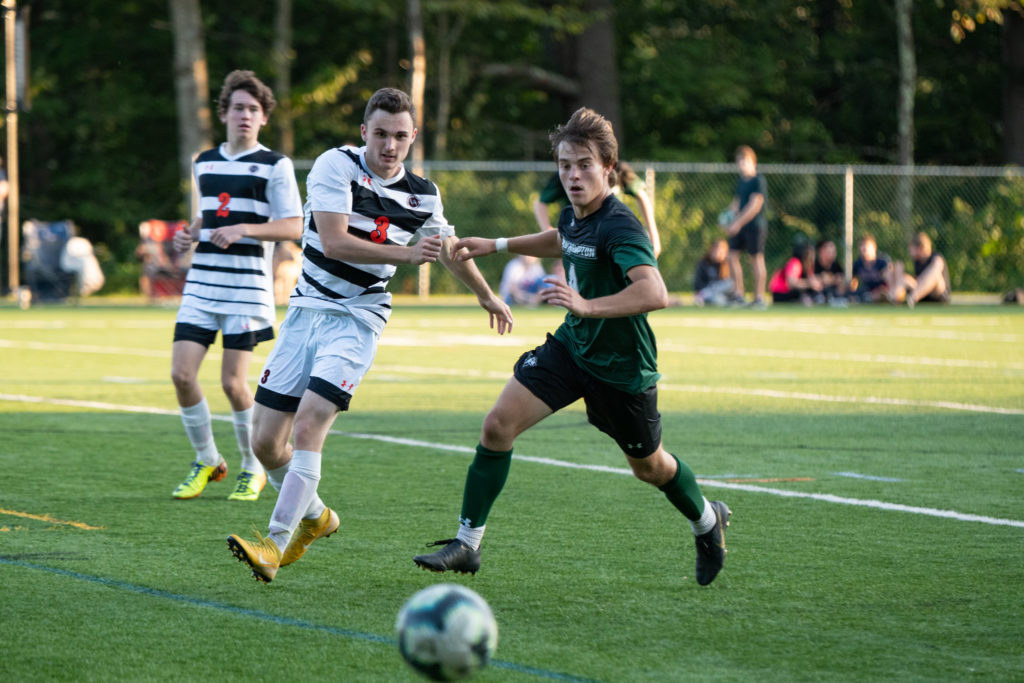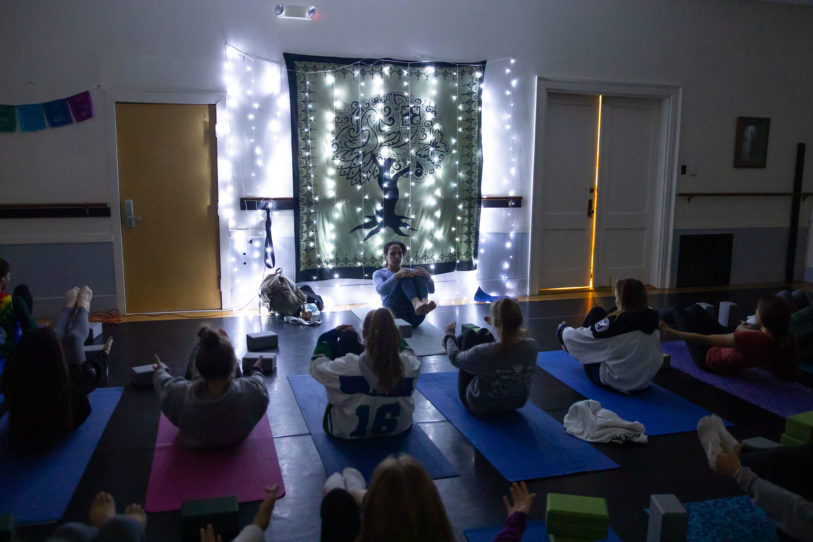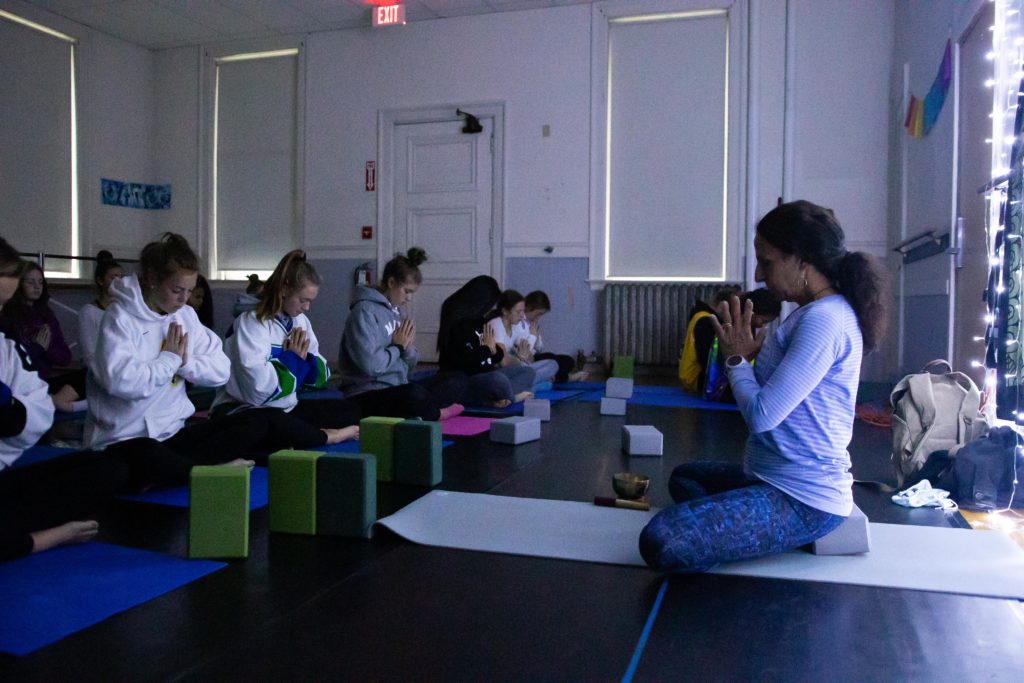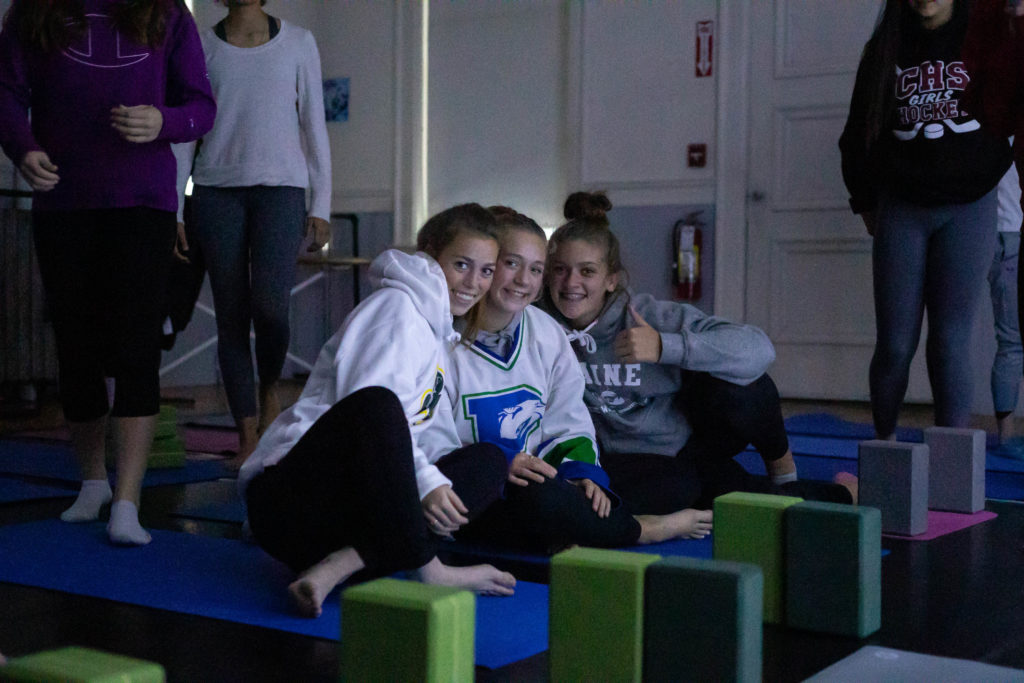Distractions are everywhere. They invade even our most well-intentioned efforts to stay focused and threaten to pull us away from accomplishing our goals. To combat these distractions, mindfulness education teaches students to focus on the here and now, supporting embodied presence in their studies, athletic pursuits, and artistic endeavors. And, with growing awareness of the benefits of mindfulness practice in adolescent development, New Hampton has taken this initiative a step further to enhance our athletic program with a mindfulness curriculum designed specifically for athletes.

Mindfulness as Practice
Long-time faculty member, Sara Tyson, is passionate about enhancing the lives of our students. Sara holds her CAGS in Educational Leadership, is a registered yoga instructor and a trained mindfulness teacher. She has integrated mindfulness into her classroom curriculum at New Hampton School for many years. Recently, with the support of our Athletic Director, Jamie Arsenault, Sara now dedicates her afternoons to working with our athletes.
When we asked Sara to share a few thoughts about the program, this is what she had to say: “The practice of mindfulness when done with athletes, whether in or out of season, supports present moment awareness, intention focus, more ease with the redirection of thoughts and the softening of the mind’s reactivity. The focus of each session varies slightly depending on whether the student-athlete is in or out of season. In season, the yoga is mostly for releasing tension, elongating muscles, balancing the nervous system and recovery. Out of season yoga is a bit more rigorous, with strength, balance, and flexibility guiding the sequencing for the physical asanas.
When beginning with a new group, we talk a lot about boundary-setting: entering the studio with intention, leaving shoes and phones outside, honoring the mat by staying in your own space, and not interfering with other’s experience in any way, this supports the creation of a safe environment.”
Mindfulness as Process
Each session follows a similar sequence. Over time this allows students to begin to master movements so they can further focus on quieting their minds. A typical session includes the following elements:
- Grounding in either standing, sitting or lying supine
- Feeling the breath in the body, notice points of contact
- Gentle spinal movements in all planes for warm-up
- Postures that move into more dynamic movement, focusing on opening the shoulders, low back, hip flexors and hamstrings using a variety of traditional yoga postures
- And finally, Shavasana, the coveted posture where the students are guided through a series of mindful awareness practices such as the body scan. Guided imagery is also explored and sometimes this experience is grounded with physical assists and essential oils that enhance the student’s experience.
In the Words of the Practitioners: The Mindful Athletes
We asked a few of our coaches and athletes about the benefits of mindfulness practice with their teams. Whether benefiting from increased flexibility or helping hard-working teens to recharge, all have seen it enhance their own training.
“Our team’s weekly yoga session with Ms. Tyson gives our players a chance to take a pause and recharge mentally and physically. Yoga has been incredibly beneficial in the players’ recovery and preparation, and I believe it has been a big contributor to our success. The guys absolutely love it and it is great to see them chill out and embrace that time to take care of themselves.” – Willis Griffith, Head Men’s Soccer Coach
“Yoga and mindfulness is what elevated my game, it allowed me to stay healthy and be able to push myself throughout the season”. Will Wood ’20
“Flexibility is so important in our sport as players are always in uncomfortable positions when they are on the ice. We incorporated yoga into our strength and conditioning program this fall and the guys have absolutely loved it! We will be continuing our work with Ms. Tyson throughout our season. The mindfulness piece of the yoga practice is just as important. Many of our players are in the middle of the college recruitment process, which is a stressful times, and trying to calm their minds down will have positive affects in their lives moving forward.” – Connor Gorman, Head Men’s Hockey Coach
“School and sports are both so demanding on the body and mind no matter where you are. With yoga and mindfulness, I was able to stop stressing even if it was only for a few minutes. I felt centered and happy to be in my body.” Sam Rivet ’21
“Yoga was an important component of the cross-country team’s training this season. The runners benefited from their yoga practice in a number of ways. Physically, they gained flexibility and grew more in tune with their bodies, learning to identify sore muscles and places where they carried tension. Mentally, they learned to focus their thoughts before a competition and to set an intention for the following day’s race, whether it was to run the entire race or to beat out a rival from another school. Our team was especially lucky in that Mrs. Tyson, a fellow runner, was able to share insights on how yoga and running combine.” – Meg Pechenick, Head Cross-Ccountry Coach
“Yoga once a week with Mrs.Tyson, is the most beneficial thing I have done on campus in terms of slowing down the outside world which can be so complicated at times.” Rob Farrell ’20
Staying Mindful
The focus on staying mindful keeps student-athletes in the present and elevates student interactions and learning opportunities campus-wide. However, teaching mindfulness doesn’t just have immediate gains, the long-term effects are lasting when we engage for just a few minutes a day in some sort of formal practice. We train our athletes in mindfulness practice in the hopes that they can continue to build on these skills in their future.







Sounds great. In this age of distractions, everyone needs to learn to be present in the moment. Hope it is made compulsory for all students, just just athletes.
Absolutely! While this article focuses on the mindfulness approach for athletes, all of our students receive instruction and exposure to these practices.